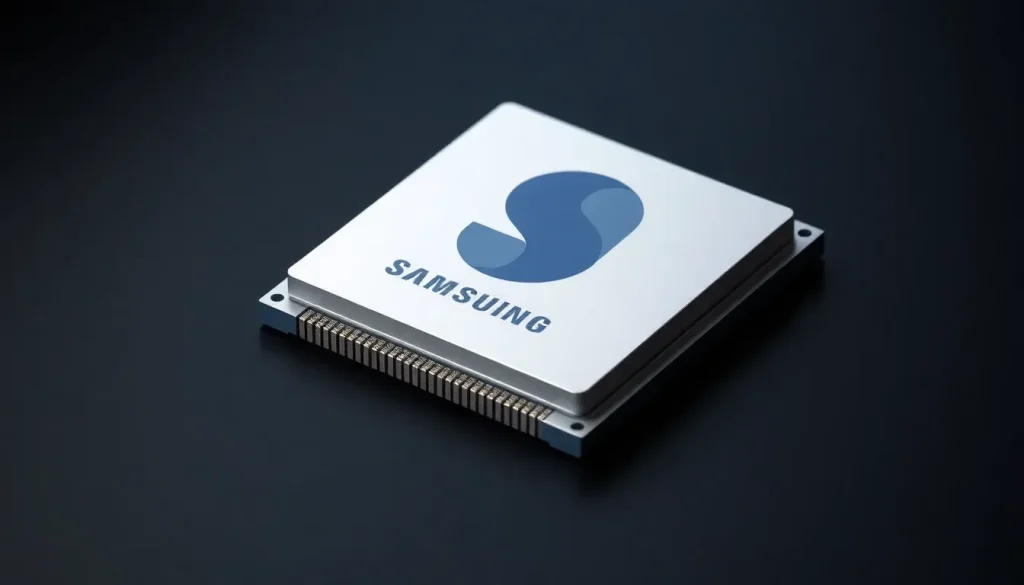Samsung produces 2nm Snapdragon 8 Elite Gen 5 for Qualcomm testing

In the fast-paced world of semiconductor manufacturing, advancements and competition drive innovation at every turn. Recently, Samsung Foundry has made headlines by delivering samples of the Snapdragon 8 Elite Gen 5 to Qualcomm, fabricated using its cutting-edge 2nm GAA (Gate-All-Around) process. This development raises several questions about performance, competition, and the future of mobile processing technology.
As Qualcomm prepares to evaluate these chips against TSMC's offerings, the implications for both companies and the wider market are significant. With the Snapdragon 8 Elite Gen 5 struggling in the performance arena against Apple’s formidable chips, the stakes have never been higher.
Understanding the Snapdragon 8 Elite Gen 5's Quality Standards
According to reports from New Daily, Samsung has produced sample chips of the Snapdragon 8 Elite Gen 5 using its most advanced manufacturing process to date. This move suggests that Samsung aims to position itself as a key supplier for Qualcomm, providing a much-needed alternative to TSMC, which is currently overwhelmed with orders.
Qualcomm’s interest in Samsung’s 2nm GAA process stems from several factors:
- Technology Advancement: GAA architecture offers enhanced control and efficiency, crucial as nodes shrink.
- Quality Assurance: Samsung's commitment to meeting Qualcomm's internal quality standards before delivering these samples highlights its dedication to reliability.
- Market Dynamics: With TSMC's manufacturing capabilities under strain, Samsung's entry could introduce much-needed competition.
While Samsung has demonstrated the ability to create chips at this advanced level, the transition from producing samples to mass production presents a significant challenge. The performance of the Snapdragon 8 Elite Gen 5 will only be fully understood once real-world devices are released.
The Challenge of Yield Rates in Semiconductor Manufacturing
Yield rate refers to the percentage of functional chips produced from a silicon wafer. Samsung has historically faced challenges in this area, which could complicate its efforts to compete effectively with TSMC. The production of the Snapdragon 8 Elite Gen 5 at the 2nm node may exacerbate these issues.
Here are some key factors affecting yield rates:
- Process Complexity: As nodes get smaller, the complexity of manufacturing increases.
- Defect Density: Higher defect rates can lead to a lower yield, requiring more resources to produce a functional chip.
- Cost Implications: Low yield rates can significantly increase the cost per usable chip, affecting profitability.
Recent reports indicate that the yield for Samsung's Exynos 2600 chip hovers around 50%, well below the ideal target of 70%. This discrepancy highlights the ongoing challenges Samsung faces in refining its manufacturing processes.
Comparing Samsung and TSMC: Who is Leading the Charge?
The battle between Samsung and TSMC is one of the most watched in the semiconductor industry. TSMC has long been regarded as the leader in chip fabrication, thanks in part to its established processes and high yields. However, Samsung's recent advancements in 2nm GAA technology could shift the balance.
When comparing both companies, consider the following:
- Technology: TSMC’s 3nm process is currently in use, but Samsung’s new 2nm GAA could offer advantages in efficiency.
- Yield Rates: TSMC consistently achieves higher yield rates, making it a preferred choice for many manufacturers.
- Capacity: TSMC's ability to handle a large volume of orders has made it the go-to for many leading semiconductor companies.
Is Qualcomm and Snapdragon the Same Entity?
Understanding the relationship between Qualcomm and Snapdragon is essential for grasping the context of these developments. Qualcomm is the parent company, known for designing and marketing the Snapdragon brand of processors.
Here are the distinctions:
- Qualcomm: A leading technology company specializing in wireless telecommunications and semiconductor design.
- Snapdragon: A series of system-on-chip (SoC) products developed by Qualcomm, featuring integrated CPU, GPU, and modem capabilities.
The Future of Snapdragon Chips: What Lies Ahead?
The evolution of Snapdragon chips, particularly with the introduction of the 8 Elite Gen 5, could signify a turning point in mobile processing technology. As Qualcomm evaluates performance against TSMC’s offerings, the industry will be keenly watching for:
- Performance Metrics: Will the 2nm GAA process provide a significant advantage in energy efficiency and power consumption?
- Market Response: How will manufacturers and consumers react to devices powered by Snapdragon 8 Elite Gen 5?
- Long-term Partnerships: Could this lead to a more established relationship between Qualcomm and Samsung in the future?
In conclusion, Samsung's foray into manufacturing Snapdragon chips at 2nm is a bold step that could reshape the competitive landscape. By enhancing its technology capabilities and addressing yield challenges, Samsung may very well secure a vital role in the future of mobile processing technology.




Leave a Reply